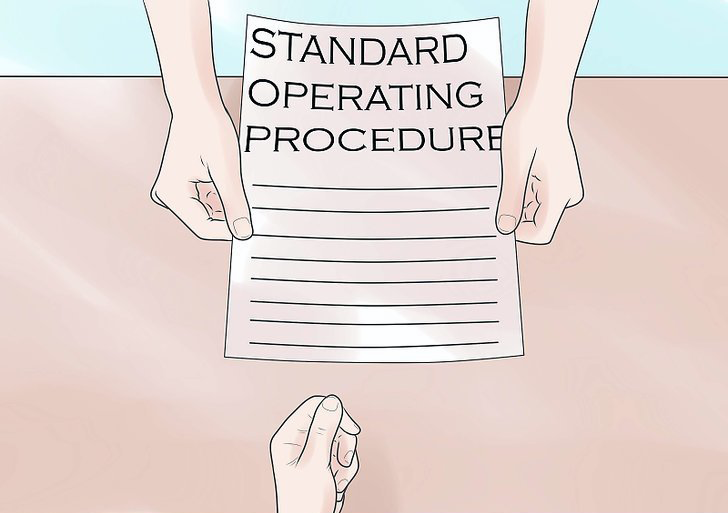Standard operating procedure can be defined as ‘a predictable, documented process for performing a task’. A Method of Procedure is defined as ‘the logical way in which something is carried out or performed’. Method of procedure would therefore be the actual instructions that are given to someone on how to carry out a task.
Method Of Procedure vs Standard Operation Procedure
Standard operating procedures are important because they make things consistent and reduce variation. Standard operating procedures are usually developed based on experience, knowledge , best practice etc… They are designed to ensure consistency across all people involved in doing the work. Procedures can be written documents or verbal direction but tend to evolve over time into writing with exceptions when there is no alternative e.g where language / pronunciation would cause confusion.
You need both standard operating procedures and method of procedure documents because you can’t ever hope to standardize everything and methods differ. Methods should be developed with agreement among those doing the task, they may not always make sense written down, but are necessary for flexibility .
Method of procedure documents are generally used when there is no requirement for consistency across people or devices carrying out the task. They are also useful where it is important all involved are familiar with what is required including any deviations from standard operating procedures. Method of procedures are generally used for preparatory tasks that precede other work activities . For example, setting up an area ready for cooking or making a coffee machine .
There is some overlap between these two types of document especially in the context of manufacturing where both product quality and safety may be compromised if necessary checks and work instructions are not followed. In order to mitigate this there is a need for both method of procedures and standard operating procedures (mop vs sop). This is particularly important where there is no documented evidence as to how particular tasks should be carried out .
Standard Operating Procedures
A Standard Operating Procedure (SOP) document provides written guidance and recommendations for people carrying out routine activities or tasks so they “know what to do, the best way to do it, and what results to expect”. SOPs can also be used as part of an audit system where compliance with them can be formally verified. As such they assume that prior training has taken place such that those following the procedure understand what it contains and why they should follow it.
SOPs are commonly used in business, health care, military operations, engineering and manufacturing.
The US Federal Aviation Administration requires certain commercial airline pilots to have specific training using Standard Operating Procedures. Commercial airlines are required by law to have SOPs for their flights which must be followed at all times when flying the aircraft.
Due to this usage of SOPs in aviation it is common for people outside the industry to incorrectly use the term “Standard Operating Procedure” or “SOP” when referring to “Standard Operating Procedures”. This is wrong since an SOP document prescribes how a task should be done rather than describing what has been done as would normally occur in an audit trail An audit trail may contain many steps and actions that were taken when doing a task, but the resulting status of the task is generally not included in an audit trail. It may be recorded in monitoring and tracking systems and included in an SOP document, though.
“Standard Operating Procedures”, or SOPs, describe how to do tasks and usually include step-by-step instructions. They also prescribe what has been done if no results are required; i.e., if the task was completed successfully (or unsuccessfully), rather than recording this information in an audit trail. An audit trail typically includes details such as steps taken and responses received during a transaction; it does not prescribe how to do a task.
For example:
SOP When you receive notification from QA, call XYZ customer to record the non-conformance in the defect tracking system. When you receive notification from QA, create a work order to cover the time needed to investigate the issue.
Customer Request
SOP When you receive notification from QA, record non-conformance in the defect tracking system. If resolution cannot be found within 24 hours, create a work order to cover the time needed to investigate the issue. Customer Request
Nowhere is it stated that this must be done within “24 hours” or even “at all”. Also note that there are no mandatory steps referenced in either paragraph of text above so neither document should be enforced nor audited against any specific requirement. These would seem like two very simple examples but the underlying need for business process standardization is often not recognized.
Non-conformances are typically recorded in one of two ways, either via a non-conformance report or issue log depending on the source of reporting. The non-conformance should be logged into the defect tracking system which may vary by organization, however it would typically provide a unique identifier for recording purposes to ensure that reports can be referenced by the right non-conformances and also allow for tracking over time. If resolution cannot be found within 24 hours, create a work order to cover the time needed to investigate the issue.
















